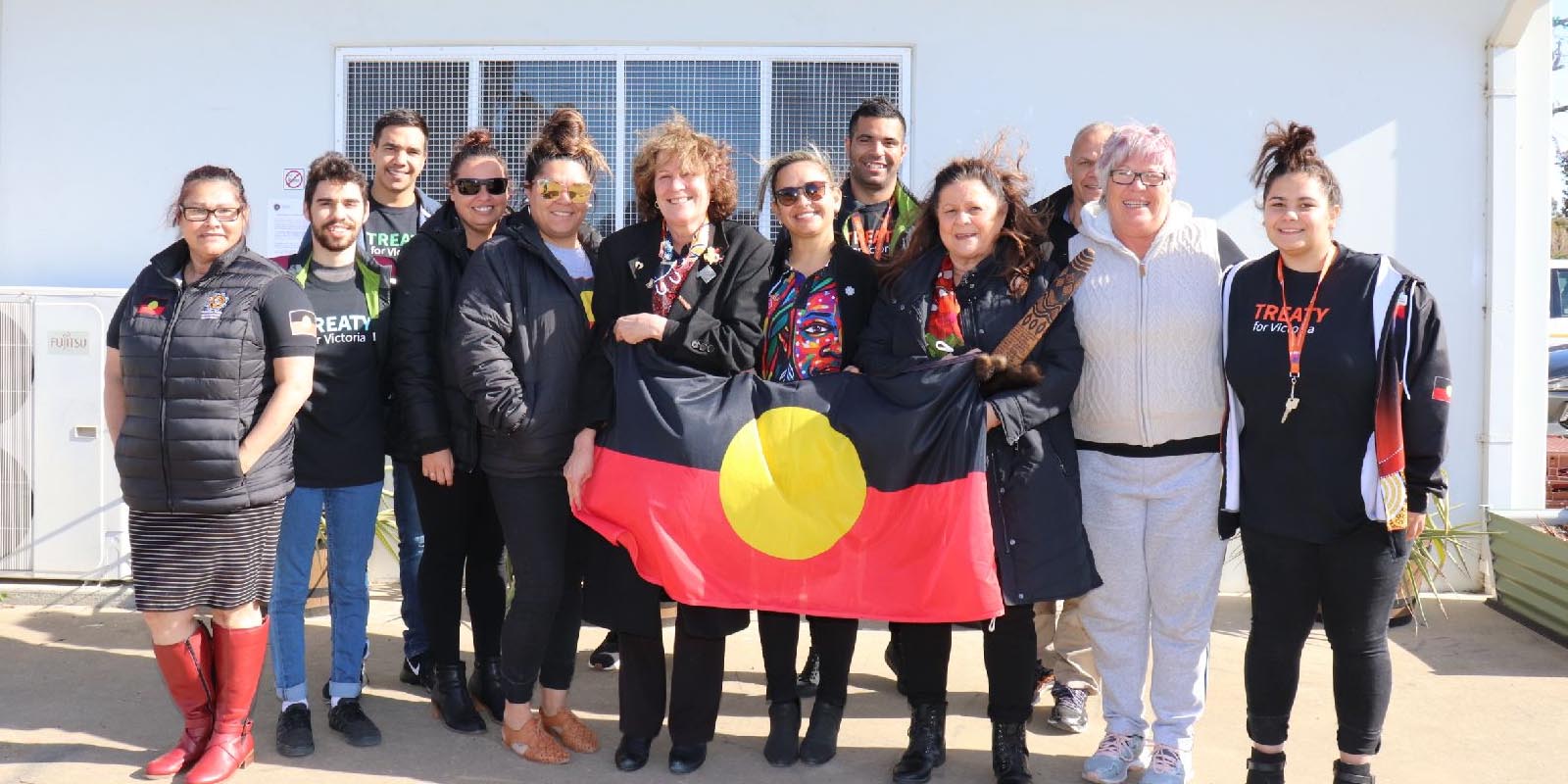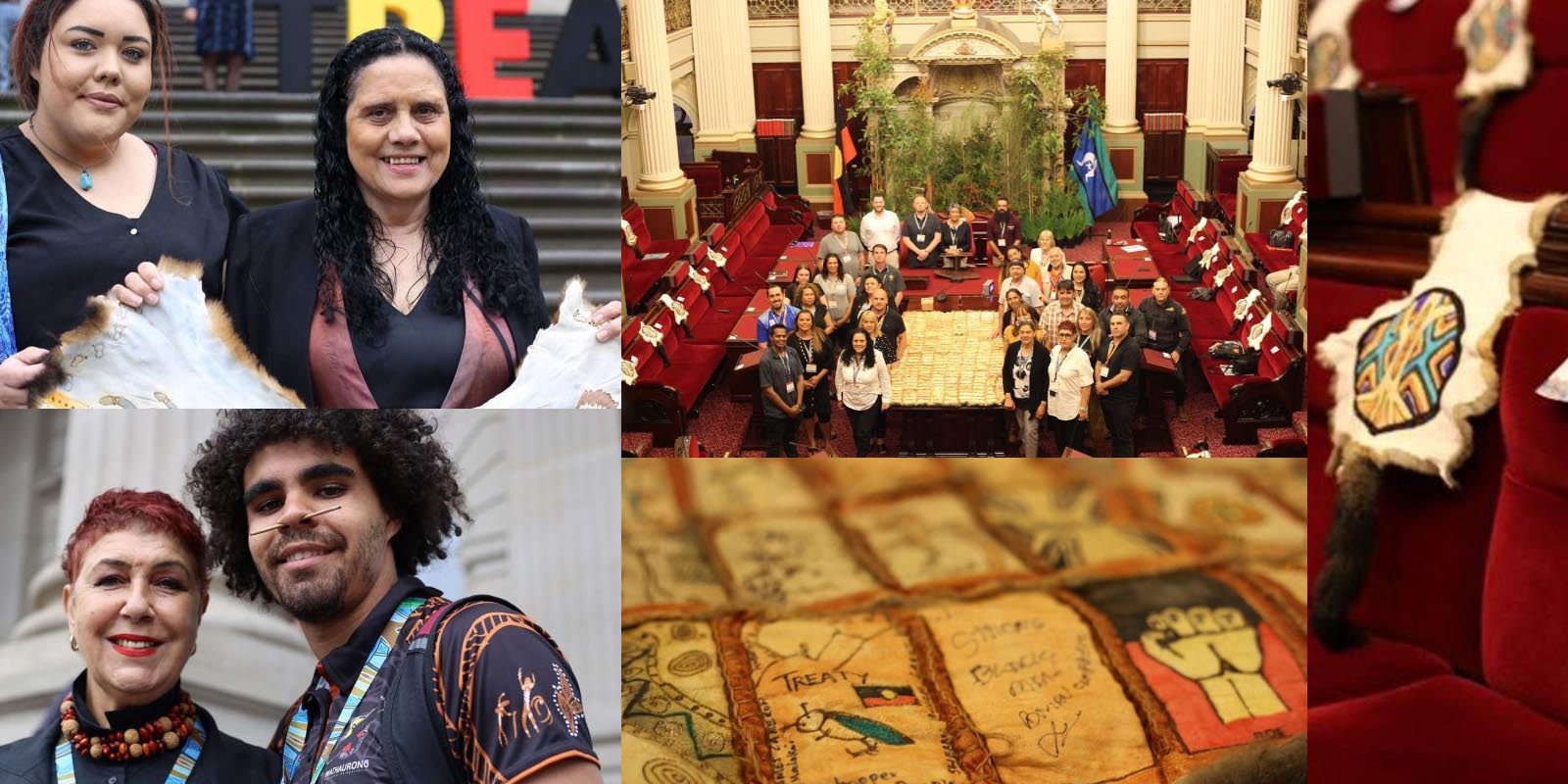A treaty is a binding agreement that is negotiated between different groups or parties, for example Aboriginal and Torres Strait Islander people and the Australian Government.
A treaty is created to show that each group has reached an agreement about duties and responsibilities around sharing land and resources and governing together. Unlike the USA, Canada or New Zealand, there has never been a treaty in Australia.
To learn more about Treaty you can check out our articles Self-Determination and Treaty and Treaties in Other Countries.
Treaty talks begin in Victoria (2016-2017)
In March of 2016 the Victorian Premier Daniel Andrews announced that the state government would be committing to discussing Treaty with the Victorian Aboriginal Community.
In July of the same year the Aboriginal Treaty Working Group was formed. The group was made up of Traditional Owners of Victoria who represented Elders, youth and the states Aboriginal community-controlled organisations (ACCOs), their aim was to bring community voices to the discussions. The Working Group engaged with community and found that it was agreed that a representative body would be needed and discussed the potential functions of this representative body.
In late 2017 another group was established, the Aboriginal Community Assembly. This group was made up of 31 community members who met to consider key questions relating to the representative body such as community representation, governance and the entity structure. The Community Assembly developed a series of detailed recommendations on the design of the Aboriginal Representative Body.
Finally, in December of 2017, the Victorian Treaty Advancement Commission was created, and Aunty Jill Gallagher AO was appointed as Victorian Treaty Advancement Commissioner. The Commission was an independent office set up to maintain the momentum of the treaty process and establish the Aboriginal Representative Body.


Treaty roadshow, Loddon Hume. Image source: Victorian Treaty Advancement Commission.
Roadshows begin and legislation is passed (2018)
After two years of consultation the Aboriginal Treaty Working Group presented its final report on the design of the Aboriginal Representative Body in March.
The regional roadshows began in April and ran through to September. The commission travelled to 30 locations across the state and held discussions with community about the process of treaty and what it meant for them. It also gave community an opportunity to have their questions answered by the commission.
In September of 2018 there was an Elders forum and a Treaty State-wide Gathering. These provided another opportunity for the commission to present the treaty process and for community to raise issues and questions they may have had.
The legislation
In August 2018 after much debating the Advancing the Treaty Process with Aboriginal Victorians Bill 2018 passed by both Chambers in Parliament.
The act has four purposes;
- To advance the process of creating a treaty between the State and Aboriginal Victorians
- To provide a mechanism so that the Aboriginal Representative Body is recognised by the State as the sole representative of traditional owners and Aboriginal Victorians for all treaty discussions and negotiations.
- To embed the guiding principles for the treaty process
- To require the representative body and the state to work together to create the elements that are necessary to support future treaty negotiations.
The full transcript of the legislation can be downloaded and read by scrolling to the bottom of this page.
The act does not specify who treaty is with nor the areas that will be included within treaty. This is to allow for self-determination so the groups who want a treaty can negotiate for themselves.


First Peoples' Assembly. Image source: ABC News.
The First Peoples’ Assembly of Victoria (2019)
The Aboriginal Representative Body was renamed as the First Peoples’ Assembly of Victoria (the Assembly).
The Assembly is to act as an independent and democratic voice for Aboriginal Victorians. It is made up of 32 traditional owners of Victoria to ensure it represents the diversity of the state. Each of the formally recognised traditional owner groups (RAP’s) are allocated one seat each with the remaining 21 being general seats split across six regions.
To learn more about the Assembly and its members you can check out their website www.firstpeoplesvic.org
Sources
- The First Peoples’ Assembly of Victoria
- Treaty in Victoria, Aboriginal Victoria
-
Advancing the Treaty Process with Aboriginal Victorians Act 2018
The State of Victoria acknowledges Victorian traditional owners as the first peoples of what is now known as Victoria. From time immemorial Victorian traditional owners have practised their laws, customs and languages, and nurtured Country through their spiritual, cultural, material and economic connections to land, water and resources.Download
